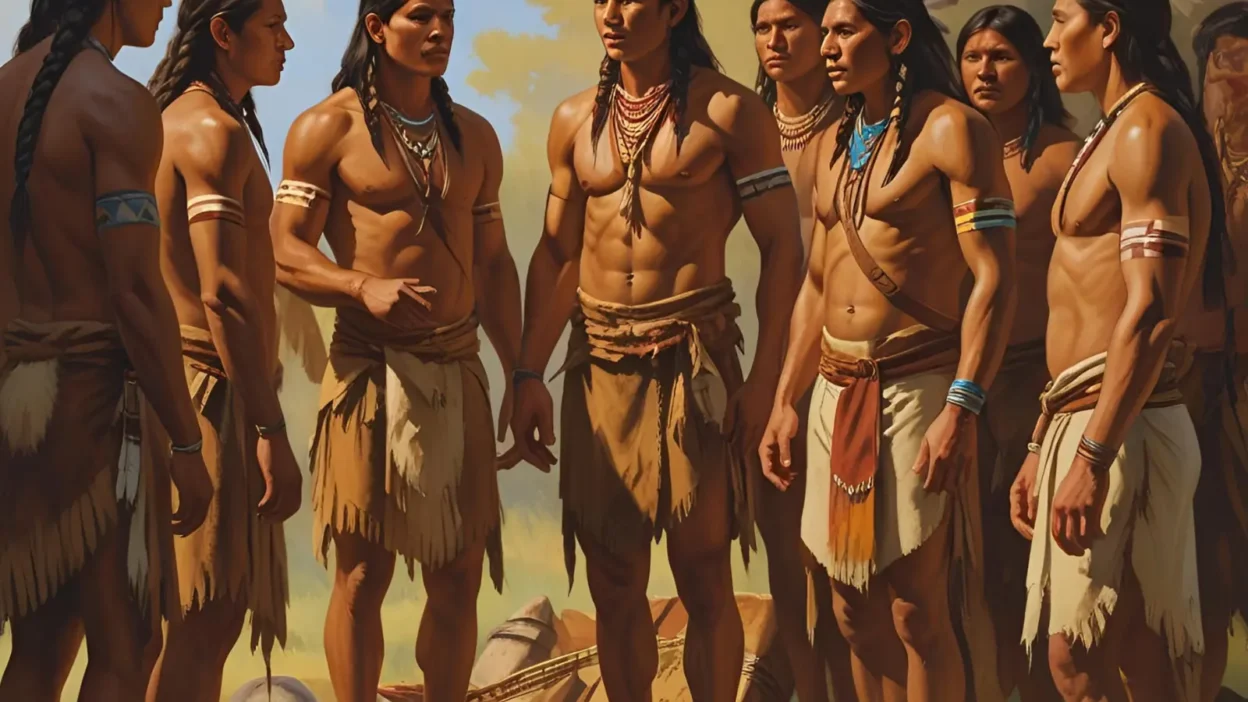You’re searching for the perfect way to describe how Native Americans reacted to the language, clothing, and customs of European explorers.
You want a clear, engaging explanation that captures the complexity of these encounters.
This article delivers exactly that, offering a detailed look at Native American responses across various contexts.
Whether you’re curious about diplomatic exchanges, casual interactions, or cultural misunderstandings, you’ll find the right perspective here.
Different situations—trade, conflict, or alliance—called for unique reactions, and this guide breaks them down clearly.
Formal Ways to Describe Native American Responses

These phrases capture the measured, respectful ways Native Americans reacted to explorers’ unfamiliar language, clothing, and customs, often in diplomatic or ceremonial settings.
- Expressed cautious curiosity toward the foreign tongue
- Observed the newcomers’ attire with reserved interest
- Responded to unfamiliar customs with diplomatic restraint
- Engaged with explorers’ language through attentive listening
- Showed intrigue at the strangers’ ceremonial practices
- Approached foreign garments with quiet scrutiny
- Demonstrated respect for differing cultural norms
- Conveyed wariness toward unknown speech patterns
- Noted the explorers’ attire with subtle astonishment
- Reacted to customs with composed observation
- Listened intently to decipher unfamiliar words
- Regarded foreign dress with thoughtful consideration
- Responded to rituals with dignified curiosity
- Expressed measured interest in linguistic differences
- Viewed explorers’ clothing with cautious fascination
- Acknowledged customs with respectful distance
- Interpreted new languages with careful attention
- Examined foreign attire with silent wonder
- Approached unfamiliar traditions with prudent reserve
- Showed restraint in response to new dialects
- Observed clothing styles with discreet surprise
- Engaged with customs through cautious inquiry
- Noted linguistic nuances with keen awareness
- Regarded explorers’ dress with subtle intrigue
- Responded to rituals with formal respect
- Listened to foreign speech with patient focus
- Viewed attire with understated curiosity
- Approached customs with diplomatic care
- Expressed interest in language with guarded respect
- Observed garments with quiet fascination
- Reacted to traditions with thoughtful restraint
- Engaged with new speech patterns attentively
Informal Ways to Describe Native American Responses

These casual expressions reflect how Native Americans might have reacted in everyday, less formal interactions with explorers.
- Checked out the weird clothes with a raised eyebrow
- Listened to the strange talk with a puzzled look
- Watched their odd ways with a curious grin
- Gave the new language a confused glance
- Stared at the fancy outfits with a smirk
- Chuckled at the explorers’ funny customs
- Tilted their head at the unfamiliar words
- Eyed the strange attire with a half-smile
- Shrugged at the odd rituals they saw
- Listened to the gibberish with a frown
- Noticed the weird getup with a quick glance
- Giggled at the newcomers’ quirky habits
- Squinted at the strange speech patterns
- Peeked at the odd clothing with curiosity
- Laughed softly at the unfamiliar traditions
- Glanced at the weird talkers with amusement
- Watched the funny outfits with a grin
- Noted the strange ways with a light chuckle
- Listened to the odd words with a head shake
- Looked at the new clothes with a raised brow
- Smiled at the quirky customs in passing
- Caught the strange speech with a side-eye
- Glimpsed the odd attire with a quick look
- Chuckled at the weird rituals quietly
- Heard the new language with a curious tilt
- Noticed the funny getup with a smirk
- Watched the odd habits with a light laugh
- Glanced at the strange talk with a grin
- Eyed the unfamiliar clothes with a nod
- Laughed at the quirky ways under their breath
- Listened to the odd speech with a smile
- Watched the weird outfits with a quick peek
Idiomatic Ways to Describe Native American Responses
These idiomatic expressions add a colorful, figurative twist to how Native Americans reacted to explorers’ language, clothing, and customs.
- Took the strange talk with a grain of salt
- Gave the odd clothes a double take
- Watched their ways like hawks
- Heard the new tongue and raised an eyebrow
- Looked at the fancy getup like it was from another world
- Saw their customs and scratched their heads
- Listened to the gibberish with a poker face
- Eyed the weird attire like a fish out of water
- Took the odd rituals in stride
- Heard the strange words and kept their cool
- Glanced at the new outfits like deer in headlights
- Watched their habits with tongues in cheek
- Listened to the foreign talk like it was Greek
- Gave the strange clothes the side-eye
- Saw their customs and played it cool
- Heard the new speech and held their horses
- Looked at the odd getup with wide eyes
- Took the quirky ways with a pinch of salt
- Listened to the strange tongue like it was a tall tale
- Eyed the unfamiliar attire like a cat on a hot tin roof
- Watched their rituals and kept a straight face
- Heard the odd words and took it in stride
- Glanced at the weird outfits like they’d seen a ghost
- Saw their customs and stayed cool as a cucumber
- Listened to the new talk with bated breath
- Looked at the strange clothes like a kid in a candy store
- Took the odd habits with a grain of salt
- Heard the foreign speech and kept their wits
- Gave the weird attire a long look
- Watched the quirky customs with a cool head
- Listened to the strange words like they were from Mars
- Eyed the odd getup with a raised brow
Professional Ways to Describe Native American Responses
These workplace-friendly phrases suit formal reports, academic writing, or professional discussions about Native American reactions.
- Evaluated the explorers’ language with careful consideration
- Observed the foreign attire with professional curiosity
- Responded to unfamiliar customs with measured respect
- Analyzed the new speech patterns attentively
- Noted the explorers’ clothing with objective interest
- Approached cultural differences with diplomatic sensitivity
- Assessed the foreign language with keen attention
- Examined the attire with professional scrutiny
- Engaged with customs in a respectful manner
- Reviewed the new dialect with thoughtful analysis
- Observed the clothing styles with formal interest
- Responded to rituals with professional restraint
- Studied the foreign tongue with careful focus
- Noted the explorers’ dress with objective curiosity
- Approached traditions with measured respect
- Analyzed linguistic differences with professional care
- Observed the attire with attentive consideration
- Engaged with customs through diplomatic observation
- Evaluated the new language with objective focus
- Noted the clothing with professional awareness
- Responded to rituals with respectful analysis
- Studied the foreign speech with careful attention
- Observed the attire with objective scrutiny
- Approached customs with professional sensitivity
- Analyzed the new dialect with thoughtful respect
- Noted the explorers’ clothing with formal curiosity
- Engaged with traditions in a measured way
- Evaluated the language with professional interest
- Observed the attire with careful consideration
- Responded to customs with diplomatic focus
- Studied the foreign tongue with objective care
- Noted the clothing styles with professional respect
Conclusion
Choosing the right phrase to describe Native American responses to explorers’ language, clothing, and customs matters.
It ensures clarity and respect when discussing these historical encounters.
Whether you’re writing formally, chatting casually, or crafting a professional report, the right expression sets the tone.
Practice these phrases to communicate with precision and sensitivity, honoring the complexity of these cultural interactions.



